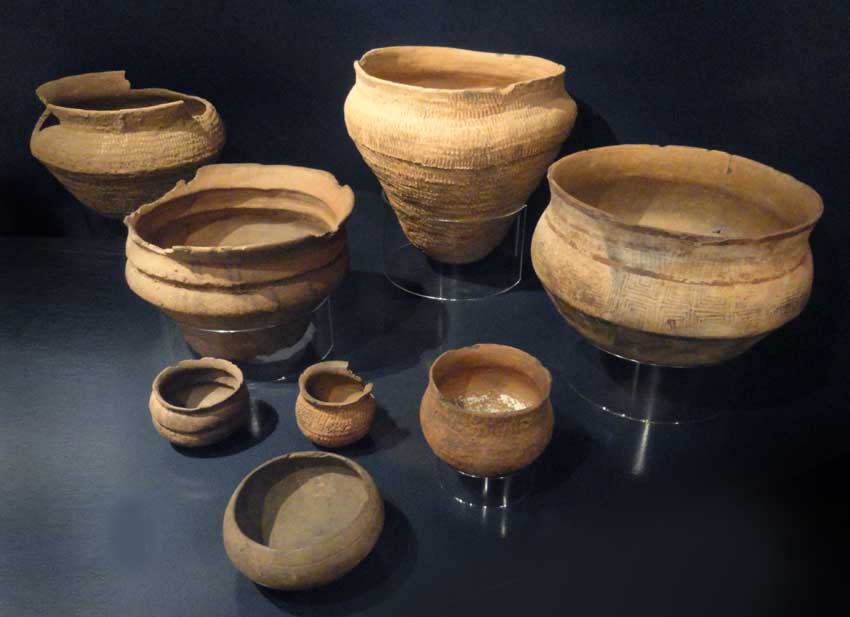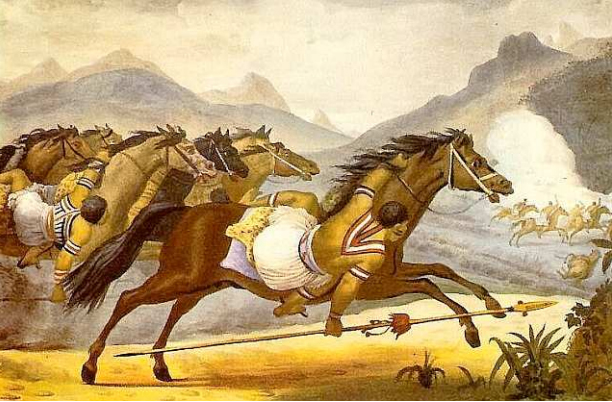|
Itatín
Itatín ( pt, Itatim) was a 17th century region, corresponding to the western half of the 21st century Brazilian state of Mato Grosso do Sul. The indigenous people (''Indians'' or ''Indios'') inhabiting the region gave their name to Itatín. The Itatínes were related to the Guaraní who lived to their south in Paraguay. In 1631, the Jesuit Order of the Roman Catholic church began founding missions in Itatín but the missions failed in 1648 because of slave raids by the Bandeirantes of Brazil and revolts against the Jesuits. Considered part of colonial Paraguay, Itatín was ceded to Brazil in 1750 by the Treaty of Madrid. The name has fallen out of use. Geography The Itatín region is roughly from north to south and the same distance from east to west. It is bordered by the Paraguay River on the west, the Maracaju Mountains on the east, the vast Pantanal wetland to the north, and the Apa River on the south. The climate is tropical and the vegetation ranges from tropical rain for ... [...More Info...] [...Related Items...] OR: [Wikipedia] [Google] [Baidu] |
Mato Grosso Do Sul
Mato Grosso do Sul () is one of the Midwestern states of Brazil. Neighboring Brazilian states are (from north clockwise) Mato Grosso, Goiás, Minas Gerais, São Paulo and Paraná. It also borders the countries of Paraguay, to the southwest, and Bolivia, to the west. The economy of the state is largely based on agriculture and cattle-raising. Crossed in the south by the Tropic of Capricorn, Mato Grosso do Sul generally has a warm, sometimes hot, and humid climate, and is crossed by numerous tributaries of the Paraná River. The state has 1.3% of the Brazilian population and is responsible for 1.5% of the Brazilian GDP. The state is also known for its natural environment, and is a destination for domestic and international tourism. The Pantanal lowlands cover 12 municipalities and presents a variety of flora and fauna, with forests, natural sand banks, savannahs, open pasture, fields and bushes. The city Bonito, in the mountain of Bodoquena, has prehistoric caves, natural river ... [...More Info...] [...Related Items...] OR: [Wikipedia] [Google] [Baidu] |
Guaraní People
Guarani are a group of culturally-related indigenous peoples of South America. They are distinguished from the related Tupi people, Tupi by their use of the Guarani language. The traditional range of the Guarani people is in present-day Paraguay between the Paraná River and lower Paraguay River, the Misiones Province, Misiones Province of Argentina, southern Brazil once as far east as Rio de Janeiro, and parts of Uruguay and Bolivia. Although their demographic dominance of the region has been reduced by European colonization of the Americas, European colonisation and the commensurate rise of mestizos, there are contemporary Guarani populations in these areas. Most notably, the Guarani language, still widely spoken across traditional Guarani homelands, is one of the two official languages in Paraguay, the other one being Spanish language, Spanish. The language was once looked down upon by the upper and middle classes, but it is now often regarded with pride and serves as a symbol o ... [...More Info...] [...Related Items...] OR: [Wikipedia] [Google] [Baidu] |
Mbayá
The Mbayá or ''Mbyá'' are an indigenous people of South America which formerly ranged on both sides of the Paraguay River, on the north and northwestern Paraguay frontier, eastern Bolivia, and in the adjacent province of Mato Grosso do Sul, Brazil. They have also been called Caduveo. In the 16th century the Mbayá were called Guaycuru, a name later used generically for all the nomadic and semi-nomadic indigenous peoples of the Gran Chaco. The Kadiwéu people of Brazil are the surviving branch of the Mbayá."Kadiwéu: Introduction." ''Povos Indígenos no Brasil.'' (retrieved 3 Dec 2011) The Mbayá called themselves the ''Eyiguayegis'' 'people of the palm', a reference to the abundant in their home ... [...More Info...] [...Related Items...] OR: [Wikipedia] [Google] [Baidu] |
Aleixo Garcia
Aleixo Garcia, also known in Spanish as Alejo García, (died 1525) was a Portuguese explorer and conquistador in service to Spain. He was a castaway who lived in Brazil and explored Paraguay and Bolivia. On a raiding expedition with a Guaraní army, Garcia and a few colleagues were the first Europeans known to have come into contact with the Inca Empire. Castaway Garcia was possibly a member of the failed expedition of Juan Díaz de Solís in 1515 and 1516, which sought a sea passage from the Atlantic to the Pacific Ocean. After reaching the mouths of the Uruguay and Paraná rivers, it was apparent that the Río de la Plata was not such a strait. At this point, Solís and several crew members were killed by the indigenous people (Indians or Indios), variously identified as the Charrúa or Guaraní). His lieutenants opted to return to Spain. On their return, some of their boats were shipwrecked off Santa Catarina Island in present-day Brazil. Among the 11 or 18 Spanish and Por ... [...More Info...] [...Related Items...] OR: [Wikipedia] [Google] [Baidu] |
Bolivia
, image_flag = Bandera de Bolivia (Estado).svg , flag_alt = Horizontal tricolor (red, yellow, and green from top to bottom) with the coat of arms of Bolivia in the center , flag_alt2 = 7 × 7 square patchwork with the (top left to bottom right) diagonals forming colored stripes (green, blue, purple, red, orange, yellow, white, green, blue, purple, red, orange, yellow, from top right to bottom left) , other_symbol = , other_symbol_type = Dual flag: , image_coat = Escudo de Bolivia.svg , national_anthem = " National Anthem of Bolivia" , image_map = BOL orthographic.svg , map_width = 220px , alt_map = , image_map2 = , alt_map2 = , map_caption = , capital = La Paz Sucre , largest_city = , official_languages = Spanish , languages_type = Co-official languages , languages ... [...More Info...] [...Related Items...] OR: [Wikipedia] [Google] [Baidu] |
Shamans
Shamanism is a religious practice that involves a practitioner (shaman) interacting with what they believe to be a spirit world through altered states of consciousness, such as trance. The goal of this is usually to direct spirits or spiritual energies into the physical world for the purpose of healing, divination, or to aid human beings in some other way. Beliefs and practices categorized as "shamanic" have attracted the interest of scholars from a variety of disciplines, including anthropologists, archeologists, historians, religious studies scholars, philosophers and psychologists. Hundreds of books and academic papers on the subject have been produced, with a peer-reviewed academic journal being devoted to the study of shamanism. In the 20th century, non-Indigenous Westerners involved in countercultural movements, such as hippies and the New Age created modern magicoreligious practices influenced by their ideas of various Indigenous religions, creating what has been term ... [...More Info...] [...Related Items...] OR: [Wikipedia] [Google] [Baidu] |
Guaycurus
Guaycuru or Guaykuru is a generic term for several ethnic groups indigenous to the Gran Chaco region of South America, speaking related Guaicuruan languages. In the 16th century, the time of first contact with Spanish explorers and colonists, the Guaycuru people lived in the present-day countries of Argentina (north of Santa Fe Province), Paraguay, Bolivia, and Brazil (south of Corumbá). The name is written ''guaycurú'' or ''guaicurú'' in Spanish (plural ''guaycurúes'' or ''guaicurúes''), and ''guaicuru'' in Portuguese (plural ''guaicurus''). It was originally an offensive epithet given to the Mbayá people of Paraguay by the Guarani, meaning "savage" or "barbarian", which later was extended to the whole group. It has also been used in the past to include other peoples of the Chaco region, but is now restricted to those speaking a Guaicuruan language. First encountered by the Spanish in the 16th century, the Guaycuru peoples strongly resisted Spanish control and the eff ... [...More Info...] [...Related Items...] OR: [Wikipedia] [Google] [Baidu] |
Antonio Raposo Tavares
Antonio is a masculine given name of Etruscan origin deriving from the root name Antonius. It is a common name among Romance language-speaking populations as well as the Balkans and Lusophone Africa. It has been among the top 400 most popular male baby names in the United States since the late 19th century and has been among the top 200 since the mid 20th century. In the English language it is translated as Anthony, and has some female derivatives: Antonia, Antónia, Antonieta, Antonietta, and Antonella'. It also has some male derivatives, such as Anthonio, Antón, Antò, Antonis, Antoñito, Antonino, Antonello, Tonio, Tono, Toño, Toñín, Tonino, Nantonio, Ninni, Totò, Tó, Tonini, Tony, Toni, Toninho, Toñito, and Tõnis. The Portuguese equivalent is António (Portuguese orthography) or Antônio (Brazilian Portuguese). In old Portuguese the form Antão was also used, not just to differentiate between older and younger but also between more and less important. In Galicia ... [...More Info...] [...Related Items...] OR: [Wikipedia] [Google] [Baidu] |
Cacique
A ''cacique'' (Latin American ; ; feminine form: ''cacica'') was a tribal chieftain of the Taíno people, the indigenous inhabitants at European contact of the Bahamas, the Greater Antilles, and the northern Lesser Antilles. The term is a Spanish transliteration of the Taíno word ''kasike''. Cacique was initially translated as "king" or "prince" for the Spanish. In the colonial era the conquistadors and the administrators who followed them used the word generically, to refer to any leader of practically any indigenous group they encountered in the Western Hemisphere. In Hispanic and Lusophone countries, the term also has come to mean a political boss, similar to ''caudillo,'' exercising power in a system of ''caciquismo''. Spanish colonial-era caciques The Taíno word ''kasike'' descends from the Taíno word ''kassiquan'', which means "to keep house". In 1555 the word first entered the English language, defined as "prince". In Taíno culture, the ''kasike'' rank was her ... [...More Info...] [...Related Items...] OR: [Wikipedia] [Google] [Baidu] |
Miranda River
The Miranda River (Portuguese, Rio Miranda, variant name Rio Mondego) is a river of Mato Grosso do Sul state in southwestern Brazil. It is a tributary of the Paraguay River. The river flows north and south, and forms the border between Brazil and Paraguay. See also *List of rivers of Mato Grosso do Sul List of rivers in Mato Grosso do Sul (Brazilian State). The list is arranged by drainage basin, with respective tributaries indented under each larger stream's name and ordered from downstream to upstream. All rivers in Mato Grosso do Sul drain ... References Brazilian Ministry of Transport* Rand McNally, The New International Atlas, 1993. Rivers of Mato Grosso do Sul Tributaries of the Paraguay River {{MatoGrossodoSul-river-stub ... [...More Info...] [...Related Items...] OR: [Wikipedia] [Google] [Baidu] |
Aquidauana
Aquidauana is a municipality located in the Brazilian state of Mato Grosso do Sul. It takes its name from the river with which the name is shared. The first European settlers were imperial soldiers who arrived during the Paraguayan War and were then settled on the lands they had occupied, between the Rivers Aquidauana and Negro, after the cessation of hostilities. Aquidauana was founded on 15 August 1892 by a local committee including several leading colonels and farmers. The first teacher at the city's first school, opened in 1894, was a man called Teodoro Rondon. Aquidauana gained municipal status in 1918. Aquidauanense Futebol Clube is the municipality association football Association football, more commonly known as football or soccer, is a team sport played between two teams of 11 players who primarily use their feet to propel the ball around a rectangular field called a pitch. The objective of the game is ... club. References External links Pantanal Escape ... [...More Info...] [...Related Items...] OR: [Wikipedia] [Google] [Baidu] |





